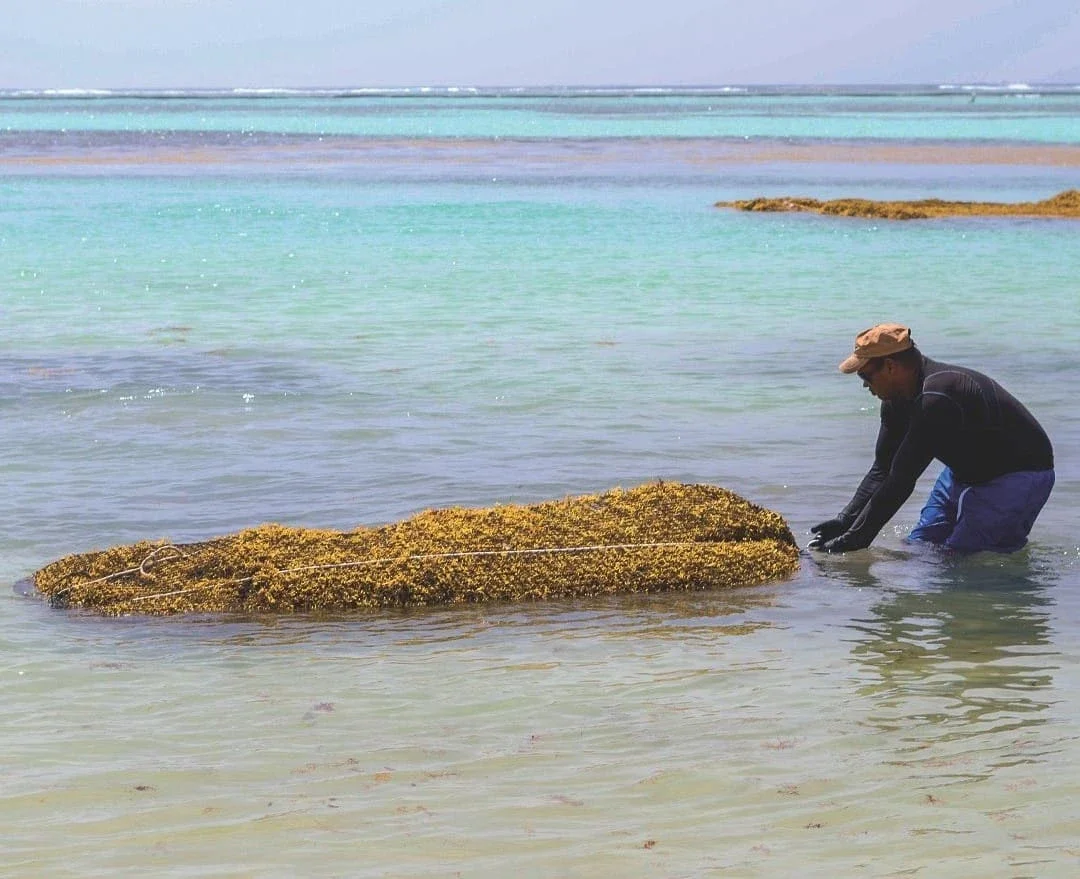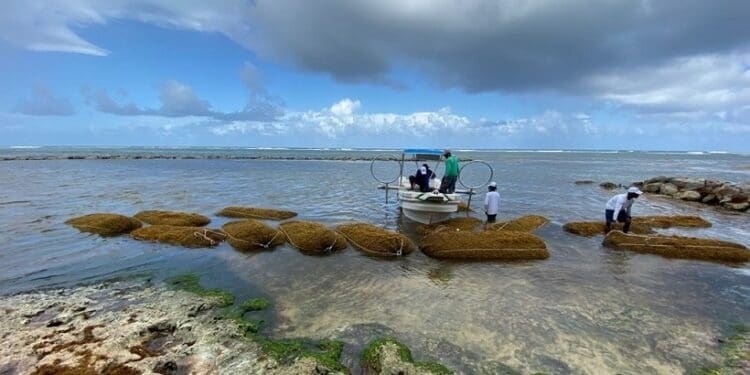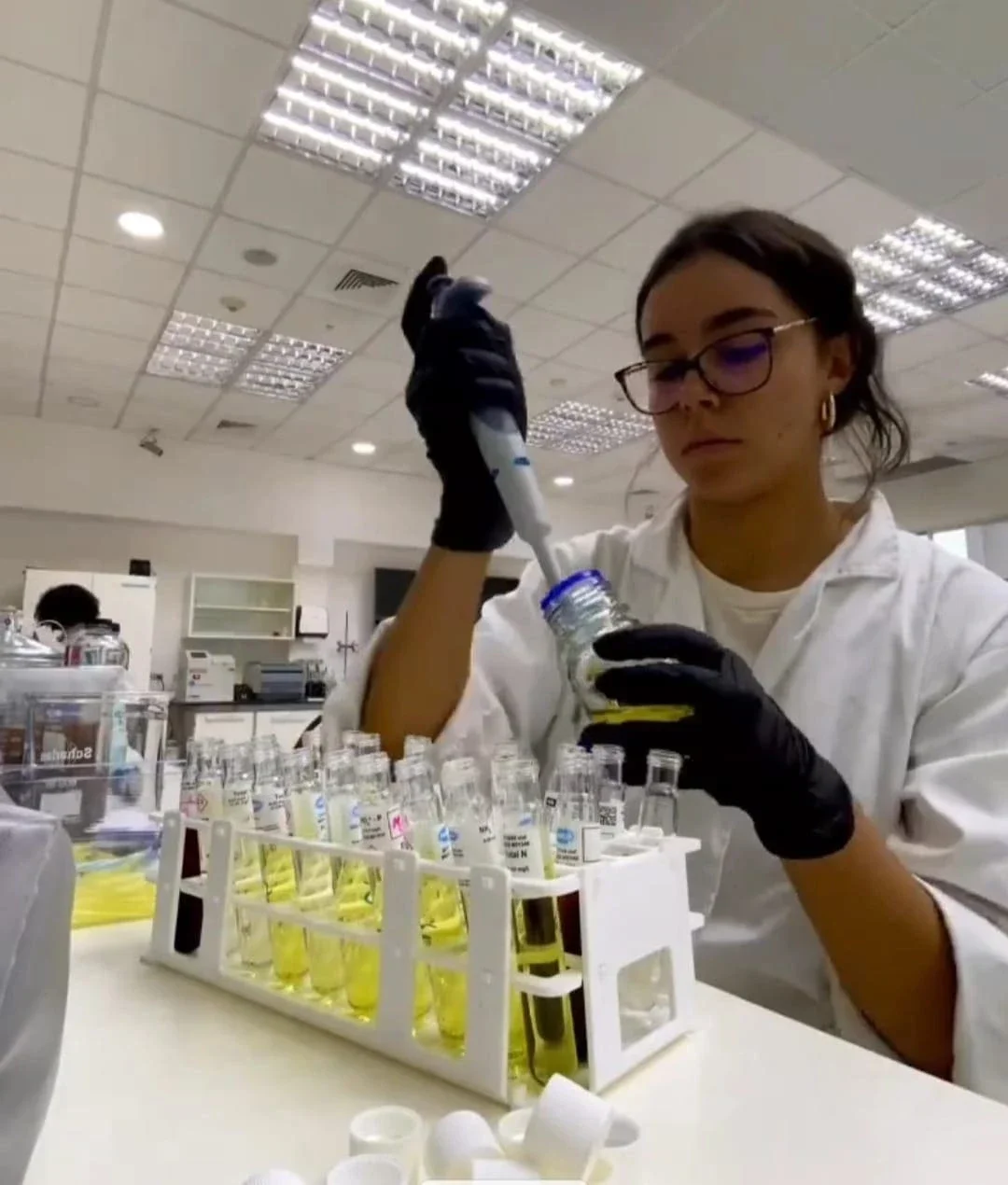Nature’s Challenge, Nature’s Solution
Sargassum is a mustard-colored seaweed that floats in island-like clumps and never attaches to the seafloor. Fueled by warming seas, coastal pollution, and fertilizer runoffs, its presence has dramatically increased in the last two decades.
It can stretch for miles across the ocean’s surface, smothering coral reefs and seagrass beds, which disrupts habitats and affects marine life. Its decomposition releases toxic gases like hydrogen sulfide, leading to oxygen depletion in the water and posing numerous respiratory, skin, and other health risks to humans.
Sargassum accumulates close to the shore in the Dominican Republic, causing challenges for marine life, fishing, and tourism. (Video Courtesy Elena Martínez)
But to tackle environmental challenges effectively, the world must prioritize the development of innovative, sustainable solutions that minimize waste and maximize resource efficiency.
Sargassum Facts
- Sargassum provides essential habitat for at least 80 marine species in the open ocean.
- Since 2011, sargassum growth has increased dramatically, with the Great Atlantic Sargassum Belt now stretching 5,000 miles across the Atlantic.
- When sargassum accumulates near coastlines, it creates “dead zones” by blocking sunlight, depleting oxygen levels, and suffocating marine ecosystems.
- Decomposing sargassum produces toxic gases like hydrogen sulfide and ammonia, which can cause respiratory and neurological damage within 48 hours of accumulation.
- The seaweed significantly impacts coastal economies, particularly tourism and fishing.
More in this Matter of Impact Edition
How an Incubator Is Turning American Ingenuity Into Impact
Go back to the previous story, which explores how an incubator addresses challenges with innovation, expertise, and hands-on support.
Read MoreTrailblazing Tomorrow: Shaping the Future with Innovation
Go back to the full edition
Read More






